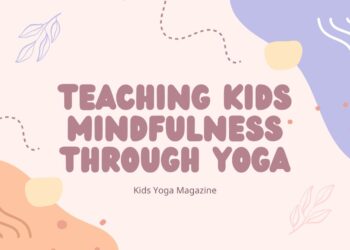In a world that can sometimes feel overwhelming for children, anxiety has become an increasingly common challenge. Whether it’s due to academic pressures, social situations, or the uncertainty of daily life, kids are not immune to stress and anxiety. However, one of the most effective ways to help children manage anxiety is through simple breathing techniques. These techniques are easy to learn and can be practiced anywhere, providing kids with powerful tools to calm their minds and bodies. Here are some simple breathing techniques that can help kids reduce anxiety and find a sense of calm.
1. Balloon Breathing
Balloon Breathing is a fun and effective technique that helps children focus on their breath and calm their minds. This technique encourages deep, mindful breathing, which can reduce feelings of anxiety and promote relaxation.
- How to Do It:
- Ask your child to sit or stand comfortably.
- Have them place their hands on their belly and imagine they are holding a balloon inside.
- Instruct them to take a deep breath in through the nose, filling up the “balloon” (their belly) with air.
- Then, have them slowly exhale through the mouth, imagining the balloon deflating as their belly contracts.
- Encourage them to repeat this process several times, focusing on the rise and fall of their belly with each breath.
Benefits: Balloon Breathing helps children regulate their breathing, which can lower heart rate and reduce anxiety. The visualization of a balloon also makes the exercise engaging and easier for kids to grasp.
2. 4-7-8 Breathing
The 4-7-8 Breathing technique is a simple yet powerful method that helps relax the nervous system. It’s particularly effective for calming anxiety and promoting a sense of peace.
- How to Do It:
- Have your child sit or lie down in a comfortable position.
- Instruct them to close their eyes and take a deep breath in through the nose for a count of 4.
- Ask them to hold their breath for a count of 7.
- Then, have them slowly exhale through the mouth for a count of 8, making a whooshing sound as they release the air.
- Repeat this cycle 4 to 5 times, encouraging them to focus on the counting and the rhythm of their breath.
Benefits: The 4-7-8 Breathing technique helps to calm the mind, reduce anxiety, and prepare the body for relaxation. The specific counting pattern also helps to distract from anxious thoughts and refocus the mind.
3. Rainbow Breathing
Rainbow Breathing is a creative technique that combines visualization with deep breathing. It’s a great way to engage younger children, helping them to relax and find calm through imagination.
- How to Do It:
- Ask your child to imagine a big, colorful rainbow in front of them.
- Have them take a deep breath in through their nose, imagining they are breathing in all the colors of the rainbow.
- As they exhale slowly through their mouth, they can imagine blowing the colors out into the world, spreading calm and happiness.
- Encourage them to repeat this for each color of the rainbow, focusing on the colors and the breath.
Benefits: Rainbow Breathing not only promotes deep, mindful breathing but also engages a child’s imagination, making it easier for them to focus and reduce anxiety. The use of colors can also be soothing and help shift their attention away from anxious thoughts.
4. Box Breathing
Box Breathing, also known as Square Breathing, is a structured breathing technique that can help children feel more in control during moments of anxiety. It’s simple to learn and can be practiced anywhere.
- How to Do It:
- Have your child sit comfortably with their back straight.
- Instruct them to breathe in through their nose for a count of 4.
- Ask them to hold their breath for a count of 4.
- Then, have them exhale through their mouth for a count of 4.
- Finally, have them hold their breath again for a count of 4 before starting the cycle over.
- Repeat the cycle several times, encouraging them to visualize drawing a square with each breath.
Benefits: Box Breathing helps regulate the autonomic nervous system, reducing stress and promoting a sense of calm. The repetitive counting and visualization can help ground a child’s thoughts and reduce feelings of anxiety.
5. Bunny Breathing
Bunny Breathing is a fun and playful breathing technique that is perfect for younger children. It helps them manage anxiety and feel more relaxed in a way that feels like a game.
- How to Do It:
- Ask your child to sit comfortably and pretend they are a little bunny.
- Instruct them to take three quick, short sniffs through their nose, as if they are sniffing the air like a bunny.
- Then, have them exhale slowly through their mouth, blowing the air out gently.
- Encourage them to repeat this pattern several times, focusing on the short, quick breaths in and the long, slow breath out.
Benefits: Bunny Breathing helps children engage in deep breathing in a fun and accessible way. It’s particularly useful for younger kids who may find it difficult to focus on more structured breathing exercises. The playful aspect of this technique makes it an enjoyable way to reduce anxiety.
Conclusion
Teaching children simple breathing techniques is an invaluable way to help them manage anxiety and promote emotional well-being. These techniques are easy to learn and can be practiced anywhere, providing kids with tools they can use throughout their lives. By incorporating these breathing exercises into their daily routine, you can help your child develop a greater sense of calm, resilience, and emotional balance. Whether at home, in school, or on the go, these techniques can make a significant difference in helping children navigate life’s challenges with confidence and ease.











